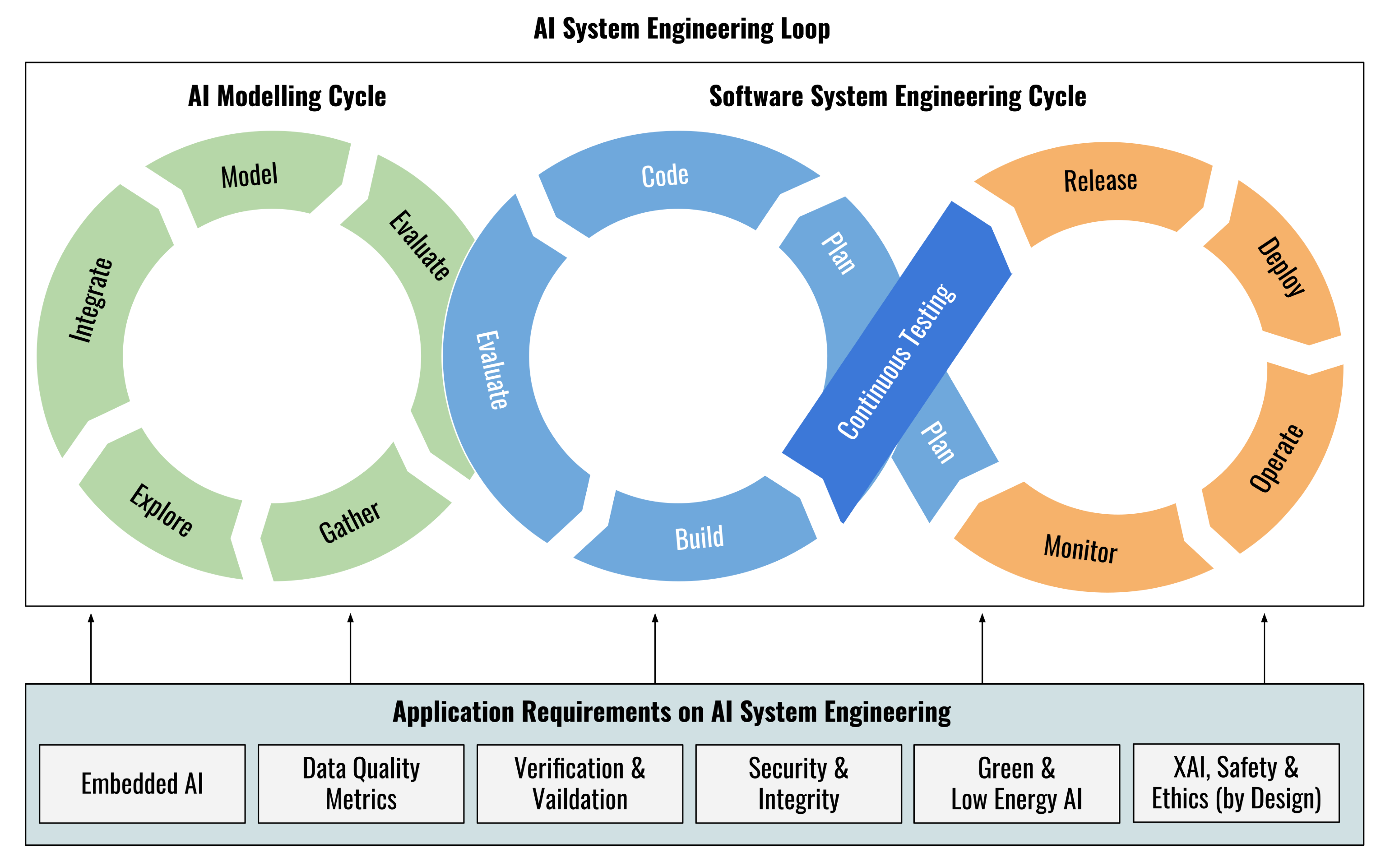Search This Blog
Sadika Media: Your Tech Knowledge Hub Empower yourself with tech insights, tutorials, guides, and courses for all levels. Stay ahead in the ever-evolving tech world with Sadika Media.
Featured post
- Get link
- X
- Other Apps
Software Engineering for AI: Building the Next Generation of Intelligent Systems

Software Engineering for AI: Building the Next Generation of Intelligent Systems
Artificial intelligence (AI) is rapidly transforming many industries and aspects of our lives. From self-driving cars to medical diagnosis, AI systems are being used to solve some of the world's most challenging problems.
Software engineering plays a critical role in the development and deployment of AI systems. Software engineers are responsible for designing, building, testing, and maintaining the software that powers these AI systems.
Challenges of Software Engineering for AI
- Complexity: AI systems are often very complex, with millions or even billions of parameters. This complexity can make it difficult to understand and debug AI systems.
- Data requirements: AI systems are typically trained on large datasets. This can make it difficult to deploy AI systems in resource-constrained environments.
- Uncertainty: AI systems are often uncertain about their predictions. This uncertainty can make it difficult to use AI systems in safety-critical applications.
Software Engineering Practices for AI
- Modularity: AI systems should be designed and implemented in a modular way. This makes it easier to understand, maintain, and evolve the system.
- Abstraction: AI systems should use abstractions to hide the underlying complexity from the user. This makes the system more accessible and easier to use.
- Testing: AI systems should be thoroughly tested to ensure that they work as expected. This includes testing the system for accuracy, robustness, and fairness.
- Monitoring: AI systems should be monitored after deployment to ensure that they continue to work as expected. This includes monitoring the system for performance, accuracy, and bias.
Examples of Software Engineering for AI
- TensorFlow: TensorFlow is a popular open-source software library for machine learning. TensorFlow provides a number of features that make it easier to build and train AI models.
- PyTorch: PyTorch is another popular open-source software library for machine learning. PyTorch is known for its flexibility and ease of use.
- ONNX: ONNX is an open format for representing machine learning models. ONNX makes it easier to deploy AI models across different platforms and frameworks.
- MLOps: MLOps is a set of practices that combine software engineering and machine learning. MLOps helps to automate the development, deployment, and management of AI systems.
The Future of Software Engineering for AI
- Increased use of automation: There will be an increased use of automation to streamline the development, deployment, and management of AI systems.
- Development of new tools and frameworks: New tools and frameworks will be developed to make it easier for software engineers to build and train AI models.
- Greater integration of AI with other technologies: AI will become more integrated with other technologies, such as cloud computing, big data, and the Internet of Things (IoT).
Conclusion
Software engineering is essential for the development and deployment of AI systems. By following the software engineering practices outlined in this article, software engineers can help to build reliable and effective AI systems.
Relevant keywords: [Add your relevant keywords here]
I hope this article has been informative. Please let me know if you have any other questions.
Other useful reference links
Courses
- Stanford University: Software Engineering for Machine Learning
- Google: MLOps: Engineering Machine Learning Systems
- Georgia Institute of Technology: Machine Learning Engineering
- DeepLearning.AI: Deep Learning for Software Engineers
- Jose Portilla: Software Engineering for AI: Building Scalable and Robust AI Systems
Books
- Machine Learning Engineering: Building Modern Data Infrastructure and CI/CD Pipelines by Ammon J. Scalable
- MLOps: From Model to Production by Martin Zinkevich, Noah Smola, and Maximilian Schuster
- Software Engineering at Google: Lessons Learned from Programming Over Time by Titus Winters, Tom Manshreck, and Hyrum Wright
- Deep Learning for Coders with Python by Enrico Mirowski and Tomasik
- Clean Code: A Handbook of Agile Software Craftsmanship by Robert C. Martin
Other useful reference links
- MLflow: Open source platform for managing the machine learning lifecycle
- Kubeflow: Machine learning toolkit for Kubernetes
- TensorBoard: Visualization tool for TensorFlow
- PyTorch Lightning: PyTorch extension for rapid development of high-performance AI models
- Hugging Face: Open source library for natural language processing
- Get link
- X
- Other Apps
Popular Posts
AI-Powered Fraud Detection How to Protect Your Business
- Get link
- X
- Other Apps
AI-Powered Image Recognition: Applications in the Real World
- Get link
- X
- Other Apps
Comments
Post a Comment